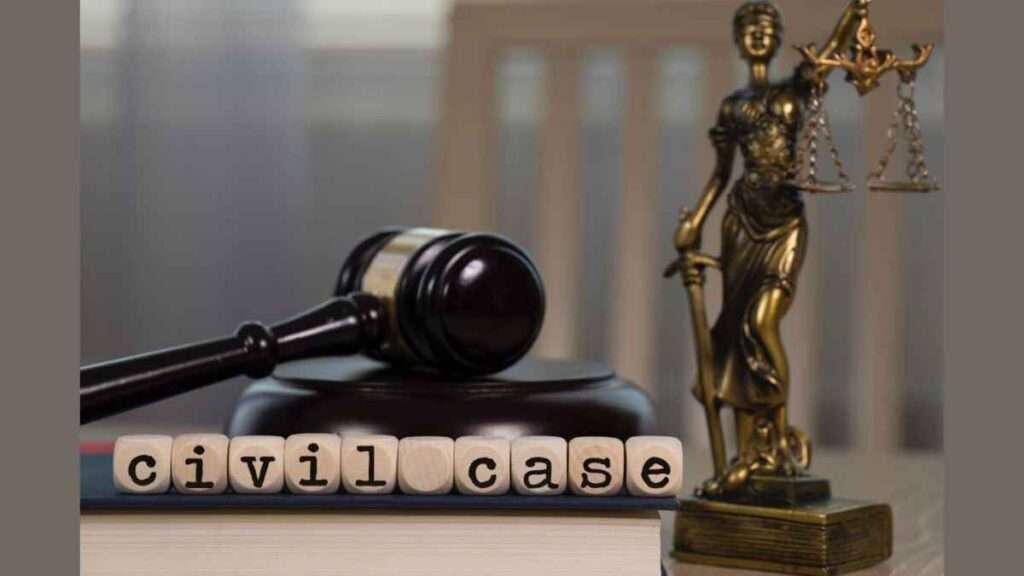Studying the Civil case filing procedure at the Chennai High Court campus is a crucial first step. While it may seem challenging at first, it becomes more manageable with practice.
Understanding the Civil Case Filing Procedure in Chennai City Civil Court
How to File a Civil Case in Chennai?
To initiate a civil lawsuit, it’s essential to adhere to a specific legal process. Failure to do so may result in the dismissal of your suit by the court registrar. Firstly, The procedural steps for filing a Civil case in Chennai are as follows:
1. Filing of Suit/Plaint
A “Plaint” is indeed essentially a written complaint or allegation that initiates a civil case. The person who files this complaint is referred to as the “Plaintiff,” while the opposing party is known as the “Defendant.” The Plaint typically includes the following elements:
- Court name and details.
- Nature of the specific complaint.
- Names and addresses of both parties involved.
Moreover, Plaintiff must verify the content of the Plaint, confirming that the details and information therein are accurate and true. Moreover, This initial step sets the foundation for the entire legal process.
Understanding Vakalatnama
1. The Role of Vakalatnama
Vakalatnama plays a critical role in authorizing an Advocate or Lawyer to represent a client in legal matters. Clients can either choose to be represented by a lawyer or represent themselves without the need for a Vakalatnama.
2. Common Terms in Vakalatnama
The Vakalatnama typically includes specific terms and conditions. Here’s an explanation of these terms and their significance:
2.1. No Holding Advocate Responsible
Clients cannot hold the Advocate responsible for legal decisions, ensuring a clear understanding of the lawyer’s role. This safeguards the lawyer from undue liability.
2.2. Client Bears Costs
Clients are responsible for covering all expenses incurred during legal proceedings. This includes court fees, process fees, and various costs associated with the case.
2.3. Advocate’s Right to Retain Documents
The Advocate has the right to retain case-related documents until the client fulfills their financial obligations. This acts as a form of security for the lawyer’s compensation.
2.4. Client’s Right to Disengage Advocate
Clients maintain the freedom to terminate the lawyer’s representation at any stage of the legal proceedings. This empowers the client to make changes if needed.
2.5. Advocate’s Decision-Making
The Advocate has the authority to make decisions during court hearings in the best interest of the client. This leverages the lawyer’s legal expertise to make strategic decisions.
The Legal Process
1. Overview of Legal Process
The legal process is a series of stages that govern a court case, from initiation to potential appeals or reviews. Each stage has specific requirements and procedures.
2. Stages in the Legal Process
The legal process encompasses various stages, each with its significance:
2.1. Filing
Filing is the initial step in bringing a legal matter to court. It involves submitting a formal complaint (plaint) and paying the required fees.
2.2. Hearing
A court hearing follows the filing, during which the court decides if the case has merit. If the case proceeds, the opposing party is issued a notice to participate in the proceedings.
2.3. Written Statement
The respondent, who is being sued, must provide a written statement in response to the plaintiff’s allegations. This statement either denies false claims or provides a defense.
2.4. Replication by Plaintiff
The plaintiff can file a replication as a response to the respondent’s written statement. The replication specifically denies the respondent’s allegations.
2.5. Filing of Other Documents
Both parties can submit additional documents to support their claims once initial pleadings are complete. The acceptance or denial of these documents can significantly impact the case.
2.6. Framing of Issues
The court frames issues that outline the key legal and factual questions in the case. These issues guide arguments and witness examinations during the proceedings.
2.7. List of Witnesses
Both parties must provide a list of witnesses they intend to call during the proceedings. The court may issue summonses to these witnesses, and the requesting party is required to deposit expenses (“Diet Money”).
2.8. Final Hearing
The final hearing is a critical stage where arguments are presented. Arguments must align with the issues framed earlier, and amendments to pleadings require court approval.
2.9. Certified Copy of Order
The certified copy of the final order is a crucial document, bearing the court’s seal and stamp. It serves as official proof of the court’s decision and is used for various purposes.
2.10. Appeal, Reference, and Review
Parties dissatisfied with a court’s decision have options to seek redress:
2.10.1. Appeal
An appeal allows parties to challenge a court’s decision. Availability and rules depend on the value of the suit and the nature of the original judgment.
2.10.2. Reference
A reference is used when there is a disagreement on a point of law. In fact, The dispute can be referred to one or more judges for resolution.
2.10.3. Review
Parties can seek a review of a court’s decision, asking the court to reconsider its judgment. Moreover, Grounds for review include errors in the judgment or the emergence of new evidence.
Read More
- Expert Company retainer Legal Support Services
- Loan disputes: How to find the Best Professional Legal Services?
- About Us: Rajendra Civil Law Firm
- Civil suit filing charges and lawyer fees in Chennai
- Ambattur Court: Protect Legal Rights with the Expert Civil Lawyers
The legal process is a structured framework that ensures due process and fair resolution of legal disputes. Finally, Each stage serves a distinct purpose, and the option for appeal, reference, or review allows for recourse if parties are unsatisfied with the court’s decision.



